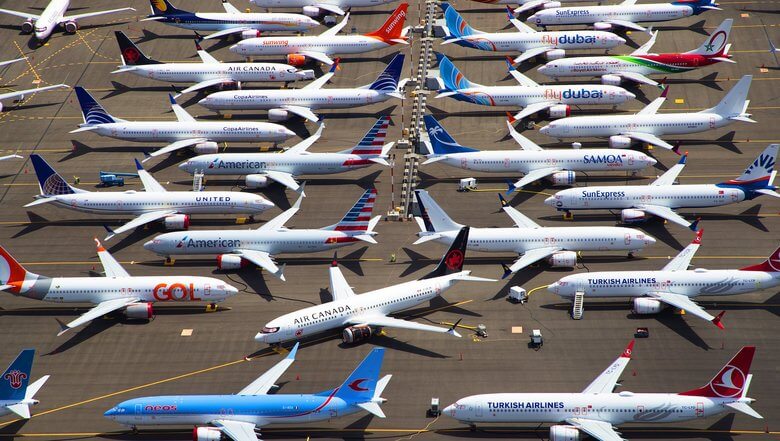Boeing is struggling hard to sail through the on-going crisis without causing too much damage to its brand image and financial results.
The Chairman and Chief Executive Officer of Boeing, Dennis Muilenburg discussed a few key aspects at the Morgan Stanley 7th Annual Laguna Conference at Laguna Beach, California, but the 737 MAX crisis and the forthcoming end to the groundings were the main topics of Boeing’s presentation.
“The situation with the 737 MAX continues to be our focus,” Muilenburg mentioned as he started his speech. “we continue to send our deepest sympathies to the families and loved ones of those who were affected by the two accidents,” he further said.
The 737 MAX return to service remains the biggest mystery of aviation world as Boeing continues to make “solid progress” and is “actively engaged with regulators around the world”. Nevertheless, the so-called solid progress has encountered a crisis, as the European Union Aviation Safety Agency’s (EASA) executive director Patrick Ky, while speaking at the European Parliament, has mentioned the fact that Boeing is yet to provide a working solution to some of the issues regarding its MAX series. In addition, EASA announced, it will conduct independent tests of the plane before it will return to service and start commercial flights to and within Europe.
Relevant: EU to supervise its own scrutiny procedures for the Boeing’s Max Planes
Muilenburg remains hopeful on the previously aimed target and “is targeting early fourth quarter [Q4 2019 – ed. note] for return to service of the 737 MAX”. However, he also reveals that the biggest concern for Boeing is “regulatory alignment”. While Boeing is submitting “various certification documents” and is answering open queries from concerned agencies worldwide, he blamed the discrepancies between agencies for “creating a timeline uncertainty”. A shift in destiny, when the ill-fated MAX returns to service on a country-by-country basis, is, according to Muilenburg, “a possibility”. “The FAA is working very hard to build that collaborative network amongst the regulators,” he stated, mentioning that “this process is about safety” and “not the politics”.
Boeing’s CEO stressed while repeating that the software onboard the aircraft is not the only update to the grounded MAX planes. Training packages are being revised, an area, which aviation experts heavily criticized after reports revealed that the pilots received a one-hour computer lecture with no hands-on experience on a simulator at all. Boeing has “developed an enhanced computer-based training module” which will ensure the new training program for pilots, “a 24-day program, which is primarily in the simulator”, Muilenburg said.
Boeing’s finances and cash flow are expected to return to pre-MAX crisis levels in 2021, as “headwind” in 2019 is expected to stretch its limits up to 2020. Calling commercial aviation in the long term “a growth business”, Muilenburg hopes that the industry is still weighing its wings to struggle in terms of deals and cash flow. This is why Boeing “is making the right investments for productivity and innovation” to further raise growth prospects.
As time flies by, Boeing is more and more confident on the MAX’s return to service. While it has some soft but undeniable reasons for uncertainty regarding certification, training, manufacturing, and deliveries as the 737 MAX is un-grounded. The biggest uncertainty for the company is whether passengers feel that the aircraft is 100% safe or not. While Muilenburg has claimed that “safety, quality, and integrity” have been the core values of the company during the crisis, the way the MAX was certified and returned to service back in 2018 has shaken up the confidence of travelers worldwide.
There is no doubt that the narrow-body MAX planes will become one of the most scrutinized aircraft by safety agencies, but it could become one of the safest aircraft ever, after such deep scrutinies and peer reviews.

